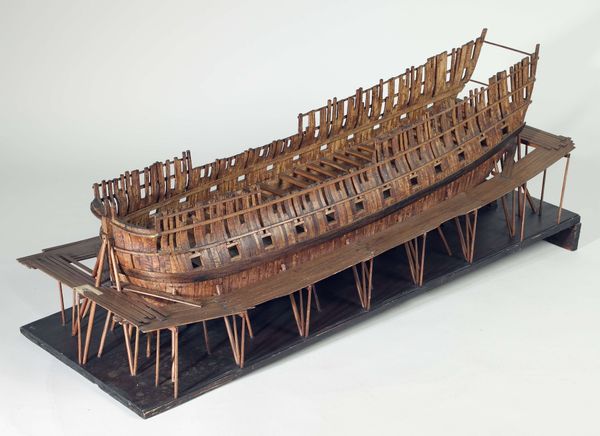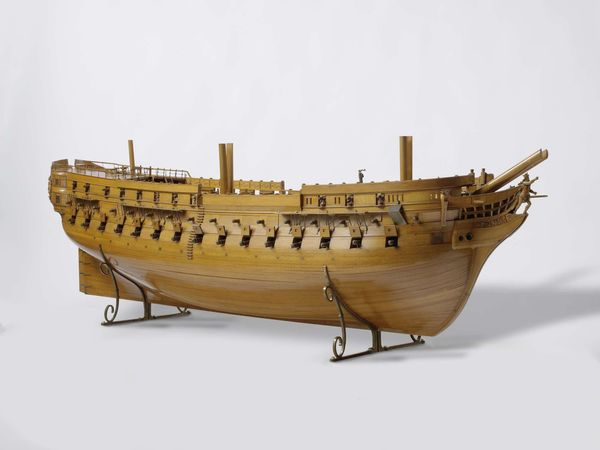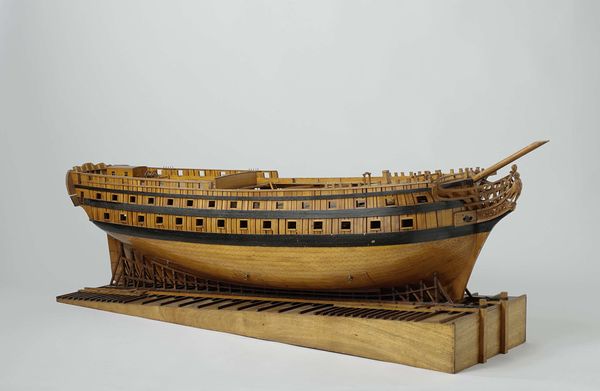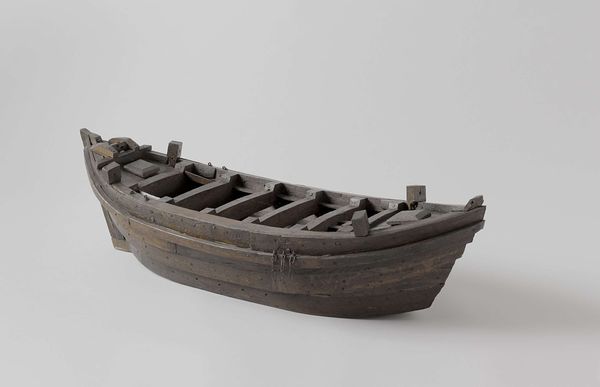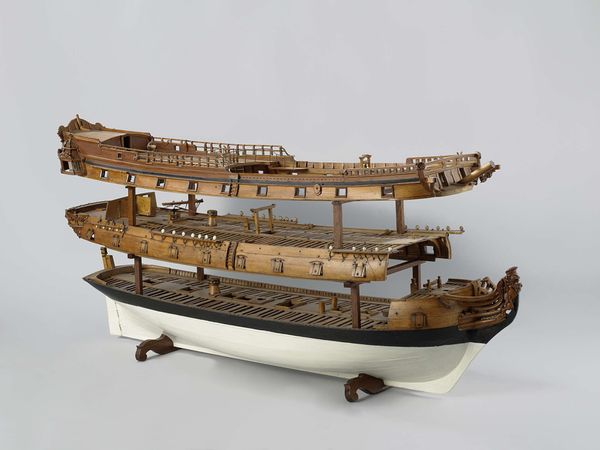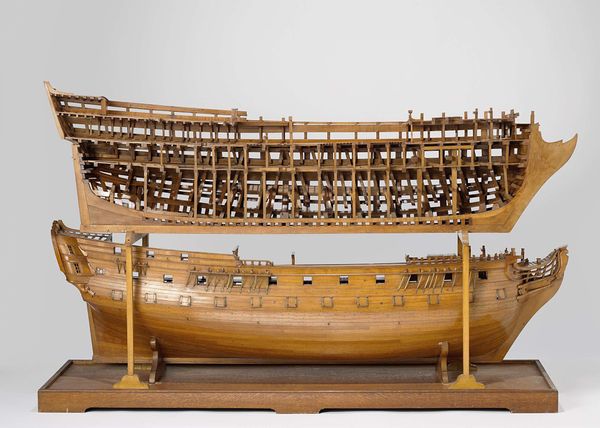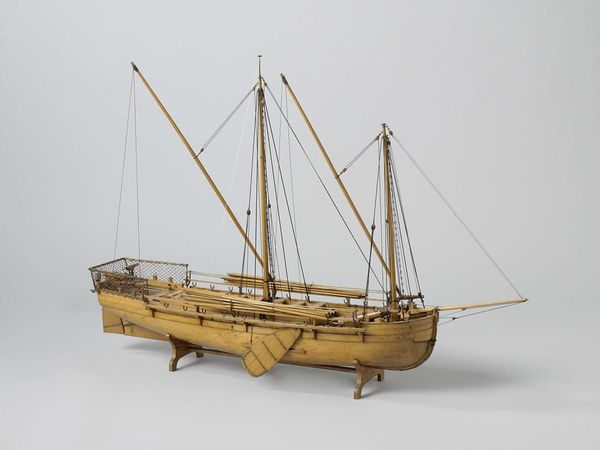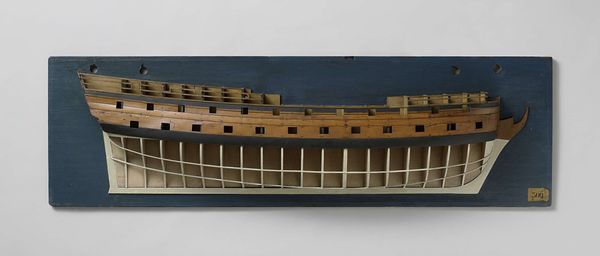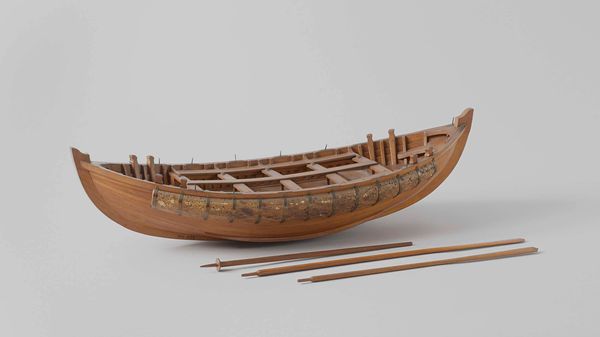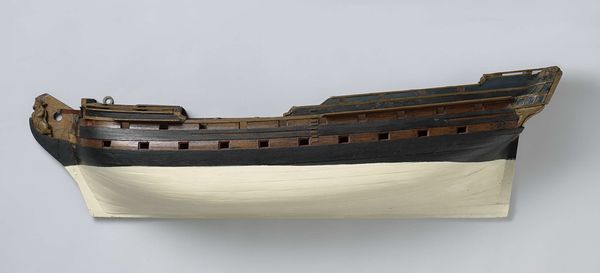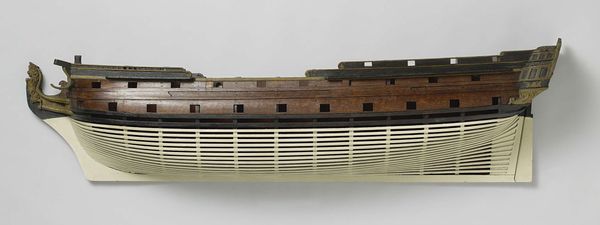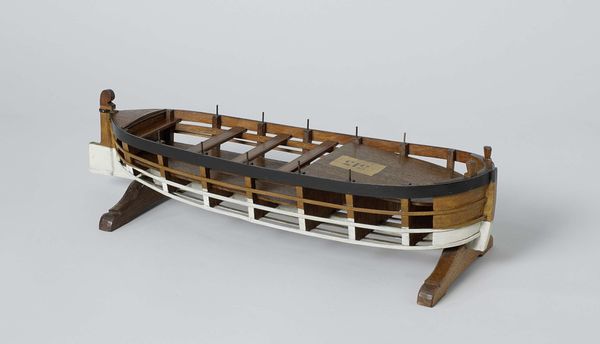
sculpture, wood
#
sculpture
#
sculpture
#
wood
Dimensions: height 60 cm, length 215 cm, width 40 cm, height 67.5 cm, width 225 cm, depth 72 cm
Copyright: Rijks Museum: Open Domain
Curator: What strikes me first is a sense of immense weight, both physical and symbolic, radiating from this sculpture. Editor: You're right; it's imposing. We're looking at a wooden sculpture entitled "Model of a Ship of War," estimated to have been created sometime between 1500 and 1900 by an anonymous artist. Considering its possible timeline, the weight you perceive undoubtedly resonates with an era defined by maritime expansion and colonization. Curator: Absolutely. Ships of war were more than just vessels; they were floating embodiments of power and dominion. Think of the iconography surrounding naval supremacy throughout history – the trident of Poseidon, Britannia ruling the waves. Even in miniature, the form itself becomes a potent symbol of that cultural memory. Editor: And not a particularly rosy memory when viewed through the lens of colonialism. These vessels, glorified as instruments of discovery, were also instruments of conquest, subjugation, and the transatlantic slave trade. How do we reconcile the artistry and craftsmanship with the brutal reality they represent? Curator: That tension is precisely what makes the artwork so compelling. Consider the meticulous details – the rows of darkened gunports, the sculpted details at the prow, each reflecting a culture deeply invested in maritime prowess. There is also a symbolic tension—the miniature nature of the model reduces the monumental to the manageable, domesticating something terrible. Editor: But the violence remains implicit, encoded within the object's very purpose. By appreciating it without critically engaging with that history, we risk perpetuating a romanticized, whitewashed narrative. This sculpture becomes a reminder of the necessity of grappling with uncomfortable histories, to unearth and confront legacies of domination. Curator: Precisely! Recognizing its power as a container of historical symbolism lets us consciously consider what elements of the ship design might offer hope for the future: trade and discovery without aggression and the cultural genocide of maritime expansion. Editor: It's a stark reminder that art, regardless of its form or intention, is never truly neutral. And in analyzing a piece like this, that responsibility lies with us.
Comments
No comments
Be the first to comment and join the conversation on the ultimate creative platform.
